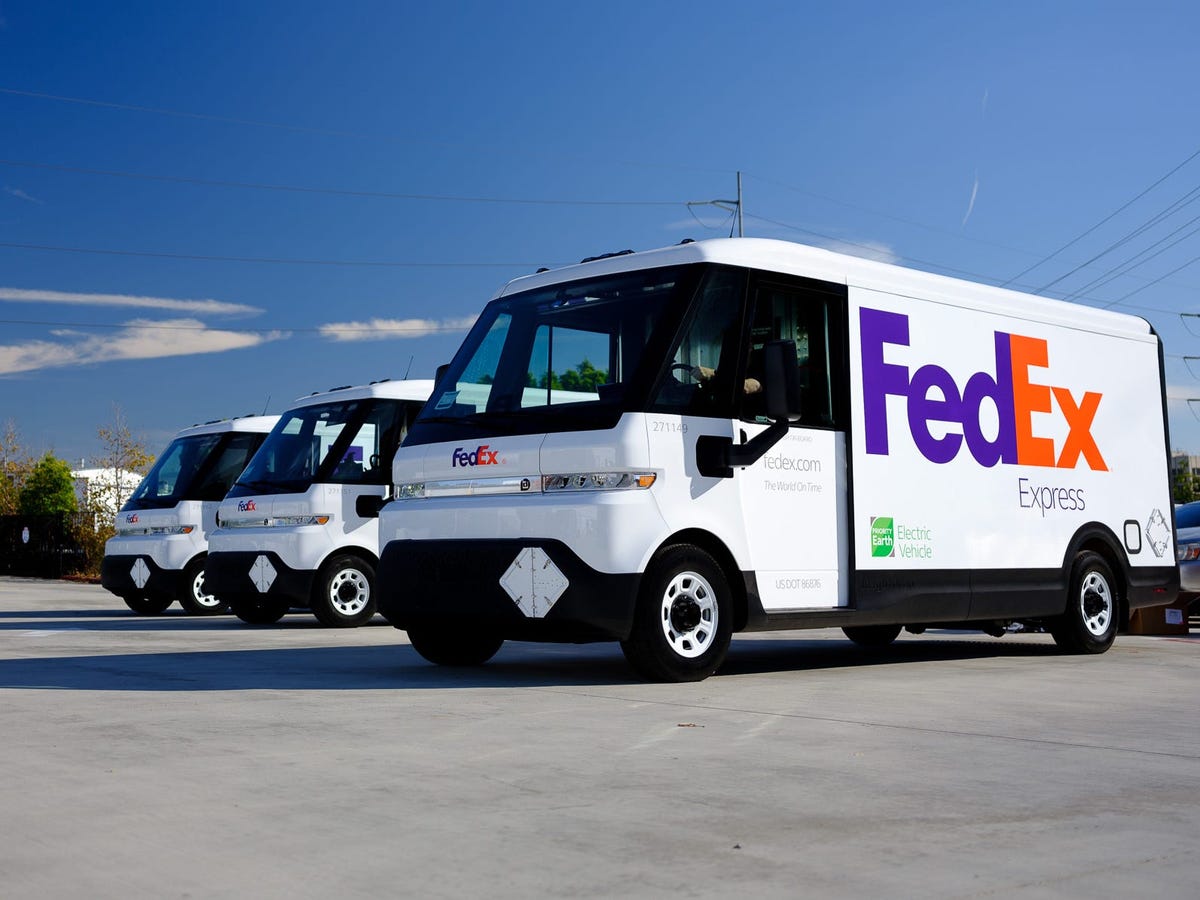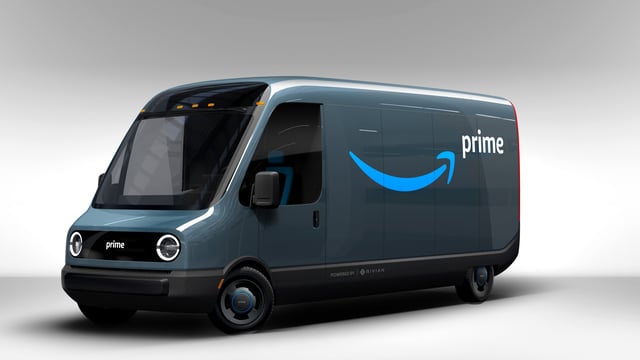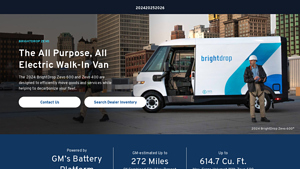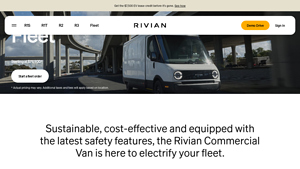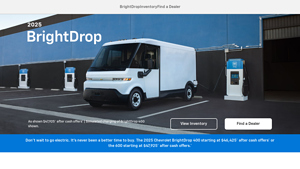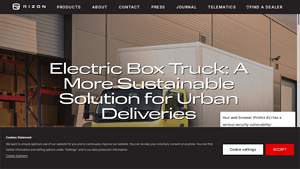Introduction: Navigating the Global Market for electric delivery truck
In today’s rapidly evolving logistics landscape, sourcing electric delivery trucks presents a unique challenge for international B2B buyers. As businesses increasingly prioritize sustainability and cost-effectiveness, the demand for these vehicles has surged. However, navigating the complexities of the global market can be daunting, especially for companies in regions like Africa, South America, the Middle East, and Europe. This guide aims to demystify the process, offering insights into the various types of electric delivery trucks available, their applications across different sectors, and essential supplier vetting criteria.
The scope of this comprehensive resource extends beyond mere vehicle specifications. It encompasses critical factors such as cost analysis, financing options, and potential tax incentives, all tailored to meet the needs of diverse markets. Additionally, we delve into the latest technological advancements that enhance fleet efficiency and driver safety, ensuring that businesses can make informed decisions. By equipping international B2B buyers with actionable insights, this guide empowers them to embrace electrification confidently, align with sustainability goals, and ultimately drive their operations forward in an increasingly competitive environment. Whether you’re based in Brazil or Nigeria, understanding the nuances of electric delivery trucks is crucial for seizing opportunities in the evolving global market.
Understanding electric delivery truck Types and Variations
| Type Name | Key Distinguishing Features | Primary B2B Applications | Brief Pros & Cons for Buyers |
|---|---|---|---|
| Walk-In Vans | Spacious cargo area, designed for easy access | Last-mile delivery, urban logistics | Pros: High cargo capacity; Cons: Limited range compared to smaller models. |
| Delivery Vans | Compact design, optimized for city driving | E-commerce, food delivery | Pros: Maneuverability in urban areas; Cons: Smaller payload capacity. |
| Chassis Cabs | Versatile platform for customization with various bodies | Specialized deliveries, utility services | Pros: Highly customizable; Cons: Requires additional investment for upfitting. |
| Box Trucks | Enclosed cargo area, ideal for transporting various goods | Freight transport, moving services | Pros: Secure cargo transport; Cons: May have higher operating costs. |
| Cargo Bikes | Compact and agile, with electric assist | Urban delivery in congested areas | Pros: Eco-friendly, low operating costs; Cons: Limited cargo capacity. |
What Are the Key Characteristics of Walk-In Vans in Electric Delivery?
Walk-in vans, such as the BrightDrop Zevo series, are designed with spacious cargo areas that provide easy access for drivers. They are particularly suitable for last-mile delivery and urban logistics, where efficiency and quick access to goods are paramount. B2B buyers should consider the high cargo volume and the zero tailpipe emissions, which contribute to sustainability goals. However, potential buyers must also weigh the limited range compared to smaller delivery vehicles, which may affect operational efficiency.
How Do Delivery Vans Meet Urban Logistics Needs?
Delivery vans are compact vehicles optimized for city driving, making them ideal for e-commerce and food delivery applications. Their smaller size allows for maneuverability in congested urban environments, enabling efficient routing and reduced delivery times. B2B buyers should prioritize the balance between cargo capacity and operational costs. While these vans excel in urban settings, they may have a smaller payload capacity compared to larger models, which could limit their utility for certain businesses.
What Makes Chassis Cabs a Versatile Option for Businesses?
Chassis cabs offer a versatile platform that can be customized with various bodies, making them suitable for specialized deliveries and utility services. This adaptability allows businesses to tailor their electric delivery trucks to meet specific operational needs, such as refrigerated transport or service vehicles. However, buyers should be prepared for additional costs related to upfitting, as the base vehicle requires further investment to reach its full potential.
Why Are Box Trucks a Reliable Choice for Freight Transport?
Box trucks feature an enclosed cargo area that is ideal for transporting various goods securely. They are commonly used in freight transport and moving services, where protection from the elements is essential. B2B buyers can benefit from the secure transport capabilities of box trucks, but they should also consider the potentially higher operating costs associated with these larger vehicles, which may impact overall profitability.
How Do Cargo Bikes Contribute to Eco-Friendly Urban Deliveries?
Cargo bikes are compact, agile vehicles equipped with electric assist, making them perfect for urban delivery in congested areas. They are particularly advantageous for businesses looking to reduce their carbon footprint and operating costs. While they offer significant eco-friendly benefits, B2B buyers must acknowledge the limited cargo capacity, which may not meet the needs of all delivery operations. Nonetheless, for small-scale deliveries, cargo bikes can be an effective and sustainable solution.
Key Industrial Applications of electric delivery truck
| Industry/Sector | Specific Application of Electric Delivery Truck | Value/Benefit for the Business | Key Sourcing Considerations for this Application |
|---|---|---|---|
| E-commerce & Retail | Last-mile delivery of packages and goods | Reduced operational costs and emissions | Range, cargo capacity, and charging infrastructure |
| Food & Beverage | Distribution of perishable goods | Enhanced sustainability and compliance | Temperature control capabilities and route optimization |
| Logistics & Supply Chain | Urban freight transport | Improved efficiency and reduced congestion | Vehicle size, payload capacity, and urban regulations |
| Pharmaceuticals | Delivery of medical supplies and medications | Ensures timely delivery and compliance | Temperature regulation and security features |
| Waste Management | Collection and transportation of recyclables | Lower emissions and improved public image | Battery range and durability for heavy loads |
How Are Electric Delivery Trucks Transforming E-commerce and Retail Logistics?
In the e-commerce and retail sectors, electric delivery trucks are essential for last-mile delivery solutions. These vehicles enable businesses to efficiently transport packages directly to customers’ doorsteps, minimizing delivery times while reducing operational costs. With zero tailpipe emissions, companies can enhance their sustainability credentials, appealing to environmentally conscious consumers. Buyers should consider the vehicle’s range and cargo capacity to ensure timely deliveries, as well as the availability of charging infrastructure in urban areas.
What Role Do Electric Delivery Trucks Play in the Food and Beverage Industry?
Electric delivery trucks are increasingly utilized in the food and beverage industry for the distribution of perishable goods. These vehicles help maintain the cold chain, ensuring that food products remain fresh during transit. The adoption of electric trucks not only reduces greenhouse gas emissions but also aligns with regulatory requirements for sustainability. Businesses should assess temperature control capabilities and route optimization features when sourcing these trucks to meet stringent delivery timelines and preserve product integrity.
How Are Electric Delivery Trucks Enhancing Logistics and Supply Chain Operations?
In logistics and supply chain management, electric delivery trucks facilitate urban freight transport, addressing challenges such as traffic congestion and pollution. These trucks are designed for efficiency, allowing companies to optimize delivery routes and reduce fuel costs. When sourcing electric trucks, businesses must consider vehicle size and payload capacity to comply with local regulations and meet specific delivery needs. Additionally, understanding urban regulations regarding emissions can further enhance operational compliance.
Why Are Electric Delivery Trucks Critical for Pharmaceuticals?
The pharmaceutical industry relies on electric delivery trucks for the timely and secure transport of medical supplies and medications. These vehicles help ensure compliance with regulatory requirements, particularly in maintaining the integrity of sensitive products. The use of electric trucks can significantly enhance a company’s sustainability profile while ensuring reliable delivery. Buyers should prioritize sourcing vehicles with robust temperature regulation systems and advanced security features to protect valuable cargo.
How Are Electric Delivery Trucks Revolutionizing Waste Management?
In the waste management sector, electric delivery trucks are utilized for the collection and transportation of recyclables. By adopting electric vehicles, companies can significantly reduce their carbon footprint while improving their public image as environmentally responsible entities. When considering electric trucks for waste management, businesses should evaluate battery range and durability, particularly for heavy loads and frequent stops. This ensures operational efficiency while contributing to sustainable waste management practices.
3 Common User Pain Points for ‘electric delivery truck’ & Their Solutions
Scenario 1: Range Anxiety in Urban Logistics
The Problem: For many B2B buyers operating in urban environments, range anxiety is a significant concern when considering electric delivery trucks. The fear that vehicles may not cover the required distances for daily deliveries, especially in cities with heavy traffic, can deter businesses from making the switch to electric. This is particularly relevant in regions with limited charging infrastructure, where the logistics of maintaining a fully charged fleet can become complex and costly.
The Solution: To mitigate range anxiety, businesses should invest in electric delivery trucks with robust battery systems designed for urban logistics, such as models offering up to 272 miles on a single charge. It is essential to conduct a thorough analysis of delivery routes and customer locations to determine range requirements accurately. Partnering with charging network providers can enhance charging infrastructure, ensuring that vehicles are charged strategically throughout the day. Additionally, utilizing fleet management software can help monitor battery levels in real-time and optimize routes to avoid low battery situations, thereby boosting efficiency and confidence in electric delivery operations.
Scenario 2: High Initial Costs of Electric Delivery Trucks
The Problem: The initial investment required to purchase electric delivery trucks can be daunting for many businesses, particularly in regions with fluctuating economic conditions. The perception that these vehicles are significantly more expensive than traditional combustion engine trucks can discourage buyers, especially small to medium-sized enterprises (SMEs) that operate on tight budgets.
The Solution: To address this challenge, buyers should explore available financing options, such as leasing programs or grants specific to electric vehicles. Many manufacturers offer attractive leasing terms that can lower upfront costs, making it feasible for SMEs to integrate electric trucks into their fleets without a heavy financial burden. Additionally, potential tax incentives for electric vehicle purchases can further reduce costs, making them a more attractive option. Conducting a total cost of ownership (TCO) analysis that considers fuel savings, maintenance costs, and potential tax benefits can help businesses recognize the long-term savings associated with electric delivery trucks, thereby justifying the initial investment.
Scenario 3: Infrastructure Limitations for Charging Electric Delivery Trucks
The Problem: Many businesses face challenges related to inadequate charging infrastructure, particularly in regions where electric vehicle (EV) adoption is still emerging. Limited access to charging stations can impede the operational efficiency of electric delivery trucks, especially for companies with large fleets or those operating in remote areas.
The Solution: To combat infrastructure limitations, businesses should consider installing dedicated charging stations at their facilities. Investing in fast-charging solutions can significantly reduce downtime and ensure that trucks are ready for their next delivery promptly. Collaborating with local governments or utility companies to advocate for the development of public charging stations can also enhance the broader infrastructure landscape. Furthermore, businesses can explore partnerships with third-party charging networks to increase access to charging solutions. It is also beneficial to implement an EV charging management system to monitor usage and optimize charging schedules, ensuring that the fleet remains operationally efficient despite existing infrastructure challenges.
Strategic Material Selection Guide for electric delivery truck
What Are the Key Materials for Electric Delivery Trucks?
When selecting materials for electric delivery trucks, it is essential to consider their properties, advantages, disadvantages, and compliance with international standards. Here, we analyze four common materials: aluminum, steel, composite materials, and plastics.
How Does Aluminum Benefit Electric Delivery Trucks?
Aluminum is a lightweight metal known for its excellent strength-to-weight ratio and corrosion resistance. It typically has a temperature rating of up to 600°F (315°C) and is highly resistant to oxidation. This makes aluminum an ideal choice for electric delivery trucks, as it contributes to enhanced fuel efficiency and range due to reduced weight.
Pros: Aluminum is durable, lightweight, and offers good thermal conductivity. It is also relatively easy to manufacture and can be extruded into complex shapes, making it suitable for various components like frames and body panels.
Cons: The main drawback of aluminum is its cost, which is generally higher than that of steel. Additionally, while it has good fatigue resistance, it can be less impact-resistant than steel.
Impact on Application: Aluminum’s corrosion resistance is particularly beneficial in humid or coastal environments, making it suitable for diverse climates in regions like Africa and South America.
Considerations for International Buyers: Compliance with standards such as ASTM B209 (for aluminum sheets) is crucial. Buyers should also consider local sourcing to mitigate costs and ensure availability.
What Role Does Steel Play in Electric Delivery Trucks?
Steel, particularly high-strength steel, is widely used in electric delivery trucks for structural components. It has excellent tensile strength and can withstand high pressures, making it suitable for load-bearing applications.
Pros: Steel is cost-effective and provides superior impact resistance. It is also highly recyclable, aligning with sustainability goals.
Cons: Steel is heavier than aluminum, which can negatively impact the vehicle’s range and efficiency. Additionally, it is prone to rust if not properly treated.
Impact on Application: Steel’s durability makes it ideal for chassis and structural components that require high strength and resilience.
Considerations for International Buyers: Compliance with standards like ASTM A36 (for structural steel) is essential. Buyers should also be aware of local regulations regarding emissions and recycling.
How Do Composite Materials Enhance Electric Delivery Trucks?
Composite materials, often a combination of fibers and resins, are gaining traction in electric delivery truck design. They are known for their high strength-to-weight ratio and excellent corrosion resistance.
Pros: Composites are lightweight, which can significantly improve efficiency and range. They also offer design flexibility and can be molded into complex shapes.
Cons: The manufacturing process for composites can be complex and expensive. Additionally, they may not be as easily recyclable as metals.
Impact on Application: Composites are particularly useful in non-structural applications, such as body panels and interiors, where weight reduction is crucial.
Considerations for International Buyers: Buyers should consider compliance with standards such as ASTM D3039 (for composite materials) and be aware of the availability of local suppliers.
What Advantages Do Plastics Offer for Electric Delivery Trucks?
Plastics are commonly used for various components in electric delivery trucks, including interiors and non-structural elements. They are lightweight and can be molded into intricate designs.
Pros: Plastics are cost-effective and provide good resistance to corrosion and chemicals. They also offer excellent insulation properties.
Cons: While lightweight, plastics may not provide the same level of structural integrity as metals. They can also degrade under UV exposure unless treated.
Impact on Application: Plastics are ideal for applications where weight savings are essential, but they may need to be combined with other materials for structural components.
Considerations for International Buyers: Compliance with standards like ASTM D638 (for plastic tensile properties) is important. Buyers should also consider the environmental impact of plastic disposal and recycling options.
Summary Table of Material Selection for Electric Delivery Trucks
| Material | Typical Use Case for electric delivery truck | Key Advantage | Key Disadvantage/Limitation | Relative Cost (Low/Med/High) |
|---|---|---|---|---|
| Aluminum | Body panels, frames | Lightweight, corrosion-resistant | Higher cost than steel | High |
| Steel | Chassis, structural components | Cost-effective, high impact resistance | Heavier, prone to rust | Medium |
| Composite | Body panels, interiors | Lightweight, design flexibility | Complex manufacturing, less recyclable | High |
| Plastics | Interiors, non-structural components | Cost-effective, corrosion-resistant | Lower structural integrity | Low |
This strategic material selection guide provides valuable insights for international B2B buyers in the electric delivery truck market, helping them make informed decisions that align with their operational needs and sustainability goals.
In-depth Look: Manufacturing Processes and Quality Assurance for electric delivery truck
What Are the Main Stages in the Manufacturing Process of Electric Delivery Trucks?
The manufacturing process of electric delivery trucks involves several key stages: material preparation, forming, assembly, and finishing. Each stage is critical in ensuring that the final product meets the high standards expected by businesses, particularly in international markets.
Material Preparation: Sourcing and Quality Control
The first step in manufacturing electric delivery trucks is material preparation. This involves sourcing high-quality materials such as aluminum, steel, and advanced composites that are essential for the vehicle’s structure and performance. Manufacturers must ensure that these materials are sourced from reliable suppliers who comply with international quality standards.
During this phase, suppliers often provide certificates of compliance, which outline the material specifications and quality assurance measures taken. B2B buyers should verify the authenticity of these documents and consider conducting supplier audits to assess their quality management systems.
Forming: Shaping Components with Precision
Once the materials are prepared, the next stage is forming. This involves processes such as stamping, welding, and machining to create the various components of the truck. Advanced techniques like CNC machining and robotic welding are often employed to ensure precision and consistency.
At this stage, manufacturers implement strict quality control measures, including in-process inspections to verify that components meet design specifications. B2B buyers should inquire about the forming techniques used and any certifications that guarantee the precision of these processes.
How Is the Assembly of Electric Delivery Trucks Conducted?
Assembly is a pivotal stage in the manufacturing process, where various components come together to form the complete electric delivery truck. This stage typically involves the following steps:
- Sub-assembly: Individual systems, such as the battery pack, electric drive train, and chassis, are assembled separately before being integrated into the main vehicle structure.
- Main assembly: The sub-assemblies are then brought together in a systematic manner, often using an assembly line to enhance efficiency and reduce lead times.
- Integration of technology: Advanced technologies, including software systems for vehicle management and connectivity features, are integrated during this phase.
Quality checkpoints are established at various points during assembly. These include Incoming Quality Control (IQC) to inspect received components, In-Process Quality Control (IPQC) during assembly, and Final Quality Control (FQC) before the vehicle is deemed ready for delivery.
What Quality Assurance Standards Should B2B Buyers Look For?
Quality assurance is crucial in the manufacturing of electric delivery trucks, especially for B2B buyers looking to ensure reliability and compliance with international standards. Key standards to consider include:
- ISO 9001: This standard outlines criteria for a quality management system and emphasizes consistent quality in products and services.
- ISO 14001: Focused on environmental management, this standard ensures that manufacturers are committed to reducing their environmental impact.
- CE Marking: In Europe, this certification indicates that the vehicle meets EU safety, health, and environmental protection standards.
For B2B buyers, especially in regions such as Africa, South America, and the Middle East, understanding these certifications is vital. They can serve as a benchmark for the manufacturer’s commitment to quality.
What Are the Common Testing Methods Used in Quality Control?
Testing methods play a significant role in ensuring that electric delivery trucks perform as expected. Common methods include:
- Functional testing: Ensures that all systems, including the electric drive and braking systems, operate correctly under various conditions.
- Durability testing: Simulates long-term use to identify potential failure points and assess the truck’s lifespan.
- Safety testing: Evaluates the vehicle’s safety features, including crash tests and emergency braking systems, to ensure compliance with safety regulations.
B2B buyers should request documentation of these tests, including results and methodologies used, to verify the truck’s performance and safety standards.
How Can B2B Buyers Verify Supplier Quality Control?
B2B buyers must take proactive steps to verify the quality control measures implemented by suppliers. Here are several strategies:
-
Supplier Audits: Conducting regular audits can provide insights into the manufacturer’s processes and adherence to quality standards. This is particularly important for international suppliers, as regulatory compliance may vary by region.
-
Quality Reports: Request detailed quality assurance reports that outline the results of inspections and tests performed throughout the manufacturing process. This can include IQC, IPQC, and FQC documentation.
-
Third-Party Inspections: Engaging independent third-party inspection services can provide an unbiased assessment of the supplier’s quality control practices. This is especially beneficial for B2B buyers who may lack the resources to conduct in-house inspections.
What Are the Quality Control Nuances for International B2B Buyers?
International B2B buyers must navigate specific nuances related to quality control, particularly when sourcing electric delivery trucks from different regions. Consider the following:
-
Regulatory Variances: Different countries may have varying regulations concerning vehicle safety and emissions. Buyers should familiarize themselves with local laws and ensure that the supplier’s products comply with these regulations.
-
Cultural Differences: Understanding cultural attitudes towards quality and compliance can impact supplier relationships. Establishing clear communication regarding quality expectations is essential.
-
Logistics and Supply Chain: B2B buyers should consider the logistics involved in shipping and receiving vehicles. Quality control must extend beyond manufacturing to include the transportation of goods, ensuring that products arrive in optimal condition.
By understanding these manufacturing processes and quality assurance standards, B2B buyers can make informed decisions when selecting electric delivery trucks for their operations. Prioritizing quality will not only enhance operational efficiency but also contribute to long-term sustainability goals.
Practical Sourcing Guide: A Step-by-Step Checklist for ‘electric delivery truck’
The purpose of this guide is to provide B2B buyers with a structured approach to sourcing electric delivery trucks. As the demand for sustainable logistics solutions increases, understanding the procurement process is essential for making informed decisions that align with business goals and environmental commitments. This checklist will help you navigate the complexities of selecting the right electric delivery vehicle for your fleet.
Step 1: Define Your Technical Specifications
Before you begin sourcing, it’s crucial to establish your operational requirements. This includes determining the vehicle’s size, range, cargo capacity, and any specialized features needed for your business.
– Considerations: Assess your delivery routes to estimate range requirements, and evaluate cargo volume to ensure it meets your logistics needs.
Step 2: Research Available Models
Investigate the current market offerings from various manufacturers. Look for electric delivery trucks that align with your defined specifications, paying attention to new releases and upcoming models.
– Tip: Check manufacturer websites and industry publications for insights on performance, availability, and innovations that could benefit your operations.
Step 3: Evaluate Potential Suppliers
Thoroughly vet potential suppliers to ensure they have a proven track record in the electric vehicle market. Request detailed company profiles, case studies, and references from clients in similar sectors.
– Specifics: Look for testimonials that highlight reliability, customer service, and the supplier’s commitment to sustainability.
Step 4: Assess Total Cost of Ownership (TCO)
Understanding the total cost of ownership is vital for budgeting. This includes not just the purchase price, but also maintenance, charging infrastructure, and potential government incentives.
– Breakdown: Calculate estimated savings from reduced fuel costs and maintenance compared to conventional vehicles, and factor in the lifespan of the vehicle.
Step 5: Verify Compliance with Local Regulations
Ensure that the electric delivery trucks meet all local and international regulatory requirements. This is particularly important in regions with strict emissions regulations or specific vehicle standards.
– Action Item: Consult local transportation authorities or industry regulations to confirm compliance and avoid any legal issues post-purchase.
Step 6: Review Financing Options
Explore financing solutions that may be available for electric vehicle purchases. This can include leases, loans, or potential subsidies for electric vehicle adoption.
– Recommendation: Engage with financial institutions or consult with your supplier about available financing plans tailored for commercial fleets.
Step 7: Conduct Test Drives and Evaluate Performance
Before finalizing your decision, arrange test drives to evaluate the vehicles in real-world conditions. This will allow you to assess the driving experience, cargo handling, and overall performance.
– Key Points: Pay attention to driver comfort, visibility, safety features, and any technology that enhances operational efficiency.
By following this checklist, B2B buyers can make informed decisions when sourcing electric delivery trucks, ensuring they select a vehicle that meets their operational needs while contributing to sustainability goals.
Comprehensive Cost and Pricing Analysis for electric delivery truck Sourcing
What Are the Key Cost Components in Electric Delivery Truck Sourcing?
When sourcing electric delivery trucks, it is crucial to understand the various cost components that contribute to the overall price. The primary cost elements include:
-
Materials: The cost of raw materials, such as batteries, electric drivetrains, and vehicle chassis, significantly impacts pricing. Advanced materials designed for durability and weight reduction can increase initial costs but may enhance efficiency and longevity.
-
Labor: Labor costs encompass both manufacturing and assembly processes. Skilled labor is required for the assembly of electric components, which can vary by region. Countries with a robust automotive workforce may offer competitive labor rates, while areas with less experience in EV production could incur higher costs.
-
Manufacturing Overhead: This includes expenses related to factory operations, such as utilities, rent, and equipment depreciation. Manufacturers often pass these costs onto buyers, making it essential to consider the production facility’s location and efficiency.
-
Tooling: Custom tooling for specific electric truck designs can be a significant upfront investment. This cost is usually amortized over the production run and can vary based on the complexity of the design.
-
Quality Control (QC): Investing in rigorous quality control processes ensures that the vehicles meet safety and performance standards. While this adds to the cost, it is essential for minimizing warranty claims and enhancing customer satisfaction.
-
Logistics: Transportation costs for delivering the trucks to the buyer can vary significantly based on distance, mode of transport, and the logistical challenges of the destination country.
-
Margin: Profit margins set by manufacturers can vary widely. Understanding the typical margins in the industry can help buyers identify fair pricing.
What Influences the Pricing of Electric Delivery Trucks?
Several factors can influence the pricing of electric delivery trucks:
-
Volume and Minimum Order Quantity (MOQ): Higher order volumes typically lead to reduced unit costs. Buyers should negotiate MOQ to leverage bulk pricing.
-
Specifications and Customization: Customized features, such as specialized cargo space or advanced safety technologies, can increase costs. Buyers must weigh the benefits of customization against the associated price increases.
-
Materials Quality and Certifications: Trucks built with higher-quality materials or those that meet specific international certifications can command higher prices. Ensuring that the materials used comply with local regulations is essential for international buyers.
-
Supplier Factors: The reputation, reliability, and financial stability of the supplier can affect pricing. Established suppliers may offer better warranties and support, justifying higher costs.
-
Incoterms: The chosen Incoterms (International Commercial Terms) can significantly impact the total cost, affecting responsibilities for shipping, insurance, and customs duties.
What Tips Can Help Buyers Achieve Cost Efficiency?
To optimize sourcing costs for electric delivery trucks, buyers should consider the following strategies:
-
Negotiation: Engage suppliers early in the procurement process to negotiate terms and pricing. Understanding the supplier’s cost structure can provide leverage in negotiations.
-
Total Cost of Ownership (TCO): Evaluate the TCO, which includes purchase price, maintenance, fuel savings, and depreciation. Electric trucks generally offer lower operating costs, which can justify a higher initial investment.
-
Pricing Nuances for International Buyers: Buyers from regions like Africa, South America, the Middle East, and Europe should be aware of local market conditions, currency fluctuations, and import tariffs. These factors can significantly influence the final price and should be factored into budgeting.
-
Seek Multiple Quotes: Obtaining quotes from various suppliers allows buyers to compare pricing and negotiate better terms. This practice can also reveal market trends and pricing benchmarks.
Disclaimer on Indicative Prices
The prices mentioned in this analysis are indicative and may vary based on market conditions, supplier negotiations, and specific vehicle configurations. Buyers should conduct thorough market research and consult with multiple suppliers to ensure they receive competitive and accurate pricing tailored to their specific needs.
Alternatives Analysis: Comparing electric delivery truck With Other Solutions
When considering the logistics and transportation landscape, businesses are increasingly evaluating various solutions for last-mile delivery. Electric delivery trucks stand out due to their sustainability and operational efficiency. However, it’s essential to explore alternatives that may fit different operational needs and budget constraints. This analysis compares electric delivery trucks with two viable alternatives: Compressed Natural Gas (CNG) delivery trucks and traditional internal combustion engine (ICE) delivery trucks.
| Comparison Aspect | Electric Delivery Truck | Compressed Natural Gas (CNG) Delivery Truck | Traditional Internal Combustion Engine (ICE) Truck |
|---|---|---|---|
| Performance | Up to 272 miles range; quiet operation | Range of 250-400 miles; faster refueling | Typically higher range but varies with fuel type |
| Cost | Higher upfront cost ($45,225 – $79,900) | Moderate upfront cost; lower fuel costs | Lower initial investment; fluctuating fuel prices |
| Ease of Implementation | Requires charging infrastructure | Requires CNG fueling stations; fewer available | Widely available fueling infrastructure |
| Maintenance | Lower maintenance costs; fewer moving parts | Moderate; similar to ICE with some specialized care | Higher due to more complex engines and components |
| Best Use Case | Urban last-mile delivery; eco-conscious fleets | Regional deliveries where CNG infrastructure exists | General deliveries; established operations |
What are the Pros and Cons of Using Compressed Natural Gas (CNG) Delivery Trucks?
CNG delivery trucks offer a middle ground between electric and traditional vehicles. They provide a reasonable range and faster refueling times compared to electric trucks, making them suitable for businesses that need flexibility in refueling. The lower fuel costs associated with CNG can lead to significant savings over time. However, the availability of CNG fueling stations can be a limiting factor, especially in regions with less developed infrastructure. Additionally, while CNG is cleaner than diesel, it still contributes to greenhouse gas emissions.
What are the Advantages and Disadvantages of Traditional Internal Combustion Engine (ICE) Delivery Trucks?
Traditional ICE delivery trucks have been the backbone of logistics for decades. They typically have lower upfront costs and a vast network of fueling stations, making them easy to implement in existing operations. However, their reliance on fossil fuels leads to higher operational greenhouse gas emissions, and they face increasing regulatory pressures to reduce emissions. Maintenance can also be more intensive due to the complexity of the engines, leading to higher long-term costs.
How Can B2B Buyers Choose the Right Delivery Solution?
Selecting the right delivery solution depends on various factors, including budget, operational needs, and sustainability goals. Electric delivery trucks are ideal for companies focused on reducing their carbon footprint and operating in urban environments with access to charging infrastructure. CNG trucks may be better suited for businesses that require flexibility in fueling options but still want to maintain lower emissions than traditional diesel. Meanwhile, ICE trucks may appeal to those prioritizing initial cost and operational simplicity, albeit at the expense of sustainability. Evaluating these aspects in the context of your specific logistics strategy will help ensure you choose the most effective solution for your business needs.
Essential Technical Properties and Trade Terminology for electric delivery truck
What Are the Key Technical Properties of Electric Delivery Trucks?
When considering electric delivery trucks for your fleet, understanding their technical properties is crucial for making informed purchasing decisions. Here are some essential specifications to consider:
1. Battery Capacity (kWh)
The battery capacity, measured in kilowatt-hours (kWh), indicates how much energy the battery can store. A higher capacity typically translates to a longer range, which is vital for delivery operations. For example, trucks like the BrightDrop Zevo 600 offer a maximum range of up to 272 miles on a single charge, making them suitable for extensive delivery routes. Selecting vehicles with adequate battery capacity ensures that your fleet can meet operational demands without frequent recharging.
2. Payload Capacity (lbs)
Payload capacity refers to the maximum weight a vehicle can carry, including cargo and any additional equipment. For delivery trucks, this is typically expressed in pounds (lbs). Understanding your payload needs helps in choosing a vehicle that can efficiently handle your logistics requirements. For instance, the Zevo 600 has a maximum available payload of 3,180 lbs, which can significantly impact your operational efficiency and cost-effectiveness.
3. Gross Vehicle Weight Rating (GVWR)
GVWR is the total weight a vehicle is rated to safely carry, including its own weight and any cargo. This specification is critical for compliance with local regulations and for ensuring the safety of operations. For example, the Zevo models have a GVWR of 9,990 to 11,000 lbs, which allows for flexibility in cargo management while adhering to legal limits.
4. Charging Time and Range
Charging time and the vehicle’s operational range are essential for minimizing downtime. The maximum charging rate indicates how quickly the truck can be recharged, which can affect fleet efficiency. For instance, some models provide a charging rate of up to 160 miles per hour, enabling quick turnarounds during busy delivery schedules. Understanding these metrics helps in planning efficient delivery routes and schedules.
5. Drive Train Configuration
The drive train configuration, such as all-wheel drive (AWD) or rear-wheel drive (RWD), impacts traction, stability, and performance, especially in varying weather conditions. AWD systems provide better control and safety, which is vital for delivery trucks operating in diverse climates and terrains.
Which Trade Terminology Should B2B Buyers Understand in the Electric Delivery Truck Market?
Familiarizing yourself with industry jargon will facilitate smoother transactions and negotiations. Here are some key terms:
1. OEM (Original Equipment Manufacturer)
An OEM refers to a company that produces parts and equipment that may be marketed by another manufacturer. In the context of electric delivery trucks, OEMs are responsible for the design and manufacturing of the vehicle itself, ensuring quality and compliance with industry standards.
2. MOQ (Minimum Order Quantity)
MOQ is the smallest quantity of a product that a supplier is willing to sell. Understanding MOQ is essential for fleet purchases, as it can affect inventory management and initial capital outlay. For instance, some manufacturers may require a minimum order of five vehicles, which can influence your purchasing strategy.
3. RFQ (Request for Quotation)
An RFQ is a document used by buyers to solicit price quotes from suppliers for specific products or services. In the electric delivery truck sector, submitting an RFQ can help you compare costs and terms from different manufacturers, allowing for better budget planning.
4. Incoterms (International Commercial Terms)
Incoterms are a set of predefined commercial terms that clarify the responsibilities of buyers and sellers in international transactions. Familiarity with Incoterms is crucial for understanding shipping costs, delivery obligations, and risk management in global supply chains.
5. TCO (Total Cost of Ownership)
TCO encompasses all costs associated with purchasing and operating a vehicle over its entire lifecycle, including purchase price, maintenance, fuel, insurance, and depreciation. Evaluating TCO helps in making more informed financial decisions regarding fleet management.
By grasping these technical properties and trade terms, B2B buyers can make strategic decisions that align with their operational needs and financial goals in the electric delivery truck market.
Navigating Market Dynamics and Sourcing Trends in the electric delivery truck Sector
What Are the Key Market Trends Influencing the Electric Delivery Truck Sector?
The electric delivery truck market is experiencing transformative growth driven by a confluence of global factors. One primary driver is the increasing regulatory pressure to reduce greenhouse gas emissions, particularly in regions such as Europe and parts of South America. Governments are introducing stringent emission targets and incentivizing the transition to electric vehicles (EVs) through subsidies and tax credits. This creates a significant opportunity for international B2B buyers to invest in electric delivery trucks that align with sustainability goals.
Technological advancements are also reshaping the market landscape. Innovations in battery technology, such as improved energy density and faster charging capabilities, are enhancing vehicle performance and reducing operational costs. As seen with models like the BrightDrop Zevo and Rivian Commercial Van, manufacturers are designing vehicles that offer extended ranges and increased payload capacities, making them suitable for diverse logistics needs.
Moreover, the trend toward urbanization and the rise of e-commerce are driving demand for efficient last-mile delivery solutions. Businesses in Africa, South America, and the Middle East are particularly positioned to benefit, as the growth of urban centers creates a pressing need for sustainable delivery options. As international B2B buyers explore their sourcing strategies, aligning with manufacturers that emphasize technological innovation and sustainability will be crucial.
How Can Sustainability and Ethical Sourcing Impact Your Business in the Electric Delivery Truck Sector?
Sustainability has become a cornerstone of modern business practices, particularly in the electric delivery truck sector. The environmental impact of traditional fossil fuel-powered vehicles is well-documented, prompting many organizations to seek greener alternatives. By transitioning to electric delivery trucks, businesses can significantly reduce their carbon footprints and enhance their corporate social responsibility profiles.
Moreover, the importance of ethical sourcing in this sector cannot be overstated. B2B buyers are increasingly prioritizing suppliers that adhere to ethical manufacturing practices, including responsible sourcing of raw materials and fair labor conditions. Certifications such as ISO 14001 for environmental management and LEED for sustainable building practices can serve as indicators of a manufacturer’s commitment to sustainability. Buyers should look for electric delivery truck manufacturers that provide transparency regarding their supply chains, as this not only mitigates reputational risks but also fosters trust among stakeholders.
Additionally, adopting “green” materials in vehicle production, such as recyclable components and low-impact manufacturing processes, enhances the overall sustainability profile of electric delivery trucks. By prioritizing ethical sourcing, businesses can create a positive impact on the environment while also appealing to a growing base of eco-conscious consumers.
How Has the Electric Delivery Truck Market Evolved Over Time?
The electric delivery truck market has evolved significantly over the past decade, transitioning from niche applications to mainstream acceptance. Initially, the adoption of electric vehicles was hindered by concerns over range, battery life, and charging infrastructure. However, advancements in technology have addressed these issues, leading to increased vehicle ranges and more robust charging networks.
In the early 2010s, companies like Tesla began to pave the way for electric commercial vehicles, showcasing the viability of electric solutions for businesses. As awareness of climate change and sustainability grew, so did interest from logistics companies seeking to enhance their operational efficiencies while reducing environmental impact. Today, major players such as GM and Rivian are at the forefront, offering sophisticated electric delivery trucks that cater to the needs of modern logistics.
The evolution of this market reflects broader societal shifts toward sustainability, innovation, and ethical business practices, positioning electric delivery trucks as a cornerstone of future logistics strategies for international B2B buyers.
Frequently Asked Questions (FAQs) for B2B Buyers of electric delivery truck
-
How do I evaluate the total cost of ownership for electric delivery trucks?
To assess the total cost of ownership (TCO) for electric delivery trucks, consider several factors beyond the initial purchase price. Analyze operational costs, including charging expenses, maintenance, and potential tax incentives. Additionally, factor in the vehicle’s range, payload capacity, and efficiency in your specific delivery routes. Comparing these elements against traditional fuel vehicles will provide a clearer picture of long-term savings and help justify the investment to stakeholders. -
What are the key features to look for in electric delivery trucks?
When sourcing electric delivery trucks, prioritize features that enhance operational efficiency and driver safety. Look for trucks with sufficient range to cover your delivery routes, high payload capacities, and advanced safety technologies like collision avoidance systems. Connectivity features for fleet management and energy-efficient designs are also essential. Lastly, consider the availability of add-ons or customization options that align with your specific operational needs. -
How can I ensure the supplier is reliable and meets international standards?
To vet suppliers effectively, conduct thorough due diligence by checking their certifications and compliance with international safety and environmental standards. Request references from other businesses in your region that have procured vehicles from the supplier. Evaluate their financial stability and customer service track record. Engaging in site visits or virtual tours of their manufacturing facilities can also provide insight into their operations and product quality. -
What customization options are available for electric delivery trucks?
Customization options for electric delivery trucks often include shelving, flooring, and specialized cargo management systems tailored to specific industries. Discuss your requirements with potential suppliers to determine the available modifications. Some manufacturers may offer bespoke solutions based on your operational needs, such as temperature-controlled compartments for perishable goods or branding options for promotional purposes. -
What is the minimum order quantity (MOQ) for electric delivery trucks?
Minimum order quantities can vary significantly among manufacturers, often depending on production capabilities and the specific model. Generally, larger orders might qualify for bulk pricing or discounts. It’s advisable to discuss your fleet requirements with potential suppliers to negotiate favorable terms that suit your business needs, especially if you’re looking to establish a long-term partnership. -
What payment terms should I expect when purchasing electric delivery trucks?
Payment terms for electric delivery trucks typically range from upfront payments to flexible financing options. Suppliers may offer installment plans or leasing agreements that spread costs over time. It’s essential to clarify all terms, including down payments, interest rates, and any potential penalties for late payments. Ensure you understand the complete financial implications before finalizing any contracts. -
How do I manage logistics and delivery for electric trucks internationally?
Managing logistics for the international delivery of electric trucks involves coordinating with freight forwarders familiar with automotive transport. Ensure you account for customs regulations and tariffs in your destination country, which can affect delivery timelines and costs. Working closely with your supplier to establish a clear shipping schedule and tracking system can facilitate smoother logistics and minimize delays. -
What quality assurance measures should I expect from manufacturers?
Reputable manufacturers should have robust quality assurance (QA) processes in place, including rigorous testing of vehicles before delivery. Inquire about their QA protocols, including inspections and compliance checks that align with international standards. Request documentation of warranty terms and service support to ensure that any issues can be promptly addressed post-purchase, fostering confidence in your investment.
Important Disclaimer & Terms of Use
⚠️ Important Disclaimer
The information provided in this guide, including content regarding manufacturers, technical specifications, and market analysis, is for informational and educational purposes only. It does not constitute professional procurement advice, financial advice, or legal advice.
While we have made every effort to ensure the accuracy and timeliness of the information, we are not responsible for any errors, omissions, or outdated information. Market conditions, company details, and technical standards are subject to change.
B2B buyers must conduct their own independent and thorough due diligence before making any purchasing decisions. This includes contacting suppliers directly, verifying certifications, requesting samples, and seeking professional consultation. The risk of relying on any information in this guide is borne solely by the reader.
Top 6 Electric Delivery Truck Manufacturers & Suppliers List
1. BrightDrop – Zevo 600 & 400 Electric Delivery Vehicles
Domain: gmenvolve.com
Registered: 2022 (3 years)
Introduction: 2024 BrightDrop Zevo 600 and Zevo 400 electric delivery vehicles designed for efficient goods movement and fleet decarbonization. Key specifications include:
– Powered by GM’s Battery Platform
– Estimated range: Up to 272 miles (combined city/highway)
– Cargo volume: Zevo 600 – 614.7 cu. ft., Zevo 400 – 412.1 cu. ft.
– Lease offer: $599/month for 36 months, $2,999 due at signing
– Starting pr…
2. Rivian – Electric Commercial Vans
Domain: rivian.com
Registered: 1998 (27 years)
Introduction: Rivian Fleet offers electric work and commercial vans starting at $79,900. The Rivian Commercial Van is designed for sustainability, cost-effectiveness, and safety, featuring 360-degree cameras and patented energy-saving microclimate seats. It aims to reduce operational GHG emissions by 50% or more compared to internal combustion vehicles. Dimensions include a length of 248.5 inches, height of 114…
3. Chevrolet – 2025 BrightDrop 400 & 600
Domain: chevrolet.com
Registered: 1994 (31 years)
Introduction: 2025 Chevrolet BrightDrop 400 starting at $46,425 after cash offers; 2025 Chevrolet BrightDrop 600 starting at $47,925 after cash offers. BrightDrop 400 max cargo volume: 412.1 cu. ft., max payload: 3,710 lbs., max GVWR: 11,000 lbs. BrightDrop 600 max cargo volume: 614.7 cu. ft., max payload: 3,350 lbs., max GVWR: 11,000 lbs. Up to 272 mi. combined city/hwy range for BrightDrop 400; up to 303/234 …
4. RIZON – Electric Box Truck
Domain: rizontruck.com
Registered: 2022 (3 years)
Introduction: Electric Box Truck: A sustainable solution for urban deliveries, also known as an electric delivery van or last-mile delivery vehicle. RIZON Trucks are a new Daimler Truck brand offering mature solutions in the class 4-5 commercial segment. Key benefits include: 1. Reduced emissions – lower CO2 emissions, no tailpipe emissions, and significant reduction in greenhouse gas emissions compared to dies…
5. Xos – Battery-Electric Trucks
Domain: xostrucks.com
Registered: 2019 (6 years)
Introduction: Xos offers 100% battery-electric trucks specifically designed for commercial use, focusing on medium-duty applications. Their products include the Xos Hub, a mobile energy storage and DC fast charger, and the Xosphere® intelligent fleet management system. Xos emphasizes a lower total cost of ownership compared to diesel vehicles and provides assistance in finding grants and incentives for their el…
6. Rush Truck Centers – Electric Vehicles Overview
Domain: rushtruckcenters.com
Registered: 1996 (29 years)
Introduction: Rush Truck Centers offers a variety of electric vehicles including trucks and buses from leading brands. Key electric truck models include:
– **Peterbilt Electric Trucks**: 579EV, 567EV, 520EV, 220EV
– **International Electric Trucks**: eMV™ Series
– **Ford Electric Vehicles**: F-150 Lightning, Mustang Mach-E, E-Transit (cargo van, chassis cab, cutaway)
– **Isuzu Electric Trucks**: NRR EV …
Strategic Sourcing Conclusion and Outlook for electric delivery truck
What Are the Key Takeaways for B2B Buyers in the Electric Delivery Truck Market?
The electric delivery truck market is rapidly evolving, driven by sustainability goals and technological advancements. Strategic sourcing offers significant advantages, enabling businesses to align procurement with their operational needs while optimizing costs. Buyers should consider the specifications and capabilities of leading models like the BrightDrop Zevo and Rivian Commercial Vans, which are designed to enhance efficiency and reduce carbon footprints. Features such as extended range, advanced safety systems, and customizability for specific logistical needs are essential for making informed decisions.
How Can International Buyers Prepare for the Future of Electric Delivery Trucks?
For international buyers, particularly in Africa, South America, the Middle East, and Europe, now is the opportune time to invest in electric delivery vehicles. As global regulations tighten around emissions and sustainability, early adoption can position companies as leaders in their respective markets. Engaging with manufacturers for fleet options and understanding local incentives can further enhance the benefits of electrification.
What’s Next for Your Business in the Electric Delivery Truck Space?
As the electric vehicle landscape matures, it is crucial to stay informed about emerging technologies and market trends. By strategically sourcing electric delivery trucks, businesses can not only improve operational efficiency but also contribute to a greener future. Take action today by evaluating your fleet needs and exploring partnerships that support your electrification journey. The future of logistics is electric—embrace it to stay ahead of the competition.

